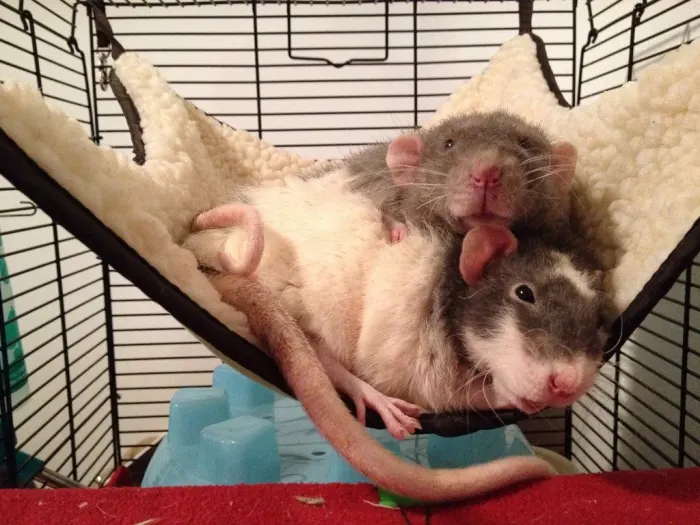By Cathy Newman
Published Oct. 9/2019
nationalgeographic.com
"Oh, wet pet," American poet Ogden Nash wrote in pithy summation of the humble goldfish, whose habitat is, by tradition, a glass bowl anchored by the faux luxury of a gravel-bound ceramic castle. But the reality is more complex, suggests a new book by Anna Marie Roos, a professor of the history of science & medicine at the University of Lincoln, in England.
In Goldfish, Roos fleshes out the cultural history of this seemingly ho-hum fish, painting it as both common & exotic, scientific research hero & environmental villain, & biogeographic success story. National Geographic spoke by phone with Roos about the fish more formally known as Carassius auratus...
Where do goldfish fit into the animal kingdom?
Goldfish are basically carp. The Chinese originally bred them to eat. Carp, which are normally grey or green, breed like crazy, & you get variations of colors & shapes. Nature plays around. They have a smattering of pigment cells that are red or gold. A mutation would have suppressed the grey pigment cells, allowing the yellow & red ones to be expressed. Humans took a mutation & made a species of them.
In China, the golden fish takes on religious overtones.
In about the 9th century, goldfish mutants, when captured by fishermen, were not eaten & [instead] released into Buddhist ponds of mercy in an act of fang sheng, or mercy release. The monks fed & kept them, so the fish were protected by not being in the open waters. Releasing an animal into such a pond of mercy was an act of self-purification, a good deed in the Buddhist religion, which becomes even better if the animal is rare, like a goldfish versus a common carp.
Let’s follow in their wake as they circulate around the world. We start with China...
They are domesticated in China more than a thousand years ago & came to Japan around the late 16th century. They go to Europe & beyond as a pet & living ornament for aquaria & fountains via Macao. The first drawing of goldfish in England is by botanist James Petiver in 1711. By the 19th century, they are in the States & mentioned in 1817 in Webster’s Dictionary.
Losing their mystique & exoticism along the way, no doubt. At one time, you write, the United States government gave them away.
In a publicity stunt, from 1884 to 1894, if you were a resident of Baltimore or Washington, D.C, & wrote your congressman, the U.S. Commission of Fish & Fisheries [today the National Marine Fisheries Service] would send you goldfish. Some 20,000 were given away each year before the program was discontinued.
Other suppliers took up the slack.
By the turn of the century, the Midwest had huge goldfish farms. Grassyfork Fishery in Indiana produced 2 million a year. Grassyfork was even a tourist attraction.
They also have a starring role in more than 40,000 scientific papers. What makes them a good subject for experiments?
One reason is that they are good at absorbing substance... In the 19th century, for example, they were used to study digitalis dosing. They can regenerate their optic nerve, so they’re of interest in vision studies. Also, they have pretty good memories, & that makes them useful in psychology studies... They are a good animal model because they breed easily & are cheap.
There was a brief goldfish-swallowing fad. What prompted that?
Officially, it started in April 1939, when a Harvard freshman swallowed one on a dare. It largely died out later that year with World War II, as there were other things to think about. Any animal rights activist would be appalled. Animals are not meant for our entertainment. In 2012, a young girl in the United Kingdom was so disturbed about the custom of giving them away as fairground prizes, she started an online petition. In England & Wales, it’s now an offense to give a goldfish as a prize to a minor.
Tell us about their troublesome side—goldfish as environmental villains.
Because they’re carp, they’re bottom-feeders & omnivores. They stir up the bottom of a pond or lake in search of prey, making the water turbid & likely to encourage algal growth. Because they are adaptable & can live in a wider range of water temperatures, they outcompete native species. In a head-to-head contest, trout will starve, goldfish will live. That’s what happens when, say, a fisherman uses goldfish as bait, dumps them in a lake, & drives home. They breed & get big. So you get huge goldfish, like the foot-&-a-half one pulled out of Lake Tahoe. In 2015, 3,000 goldfish took over Teller Lake in Boulder, Colorado. The fisheries commission was ready to electro-shock the lake to get them out, when a big flock of white pelicans flew over & picked them off one by one.
Divine intervention? But you can’t always count on a flock of pelicans to show up...
The fish has been listed as a nuisance in Colorado, Nevada, New York, North Carolina, Pennsylvania, Oregon. In Alberta, Canada, they have mounted a "Don’t Let It Loose Campaign" & made it an offense to release them.
...If anything, I hope it makes people think about how we use animals as disposable commodities & the assumptions we make about their intelligence. Animals are not put here exclusively for human use.
*This interview has been edited and condensed for clarity. Goldfish, from Reaktion Books, is available now.
Cute Christmas Critters:
Christmas Chuckle:
























